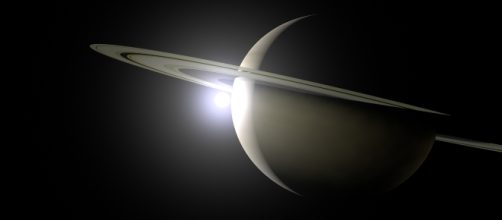One of Saturn's largest moons, Titan, is one of the most popular moons in the region because it is said to have the right chemistry for life. But today, it was discovered that the moon might also have a calm surface that could serve as a landing pad for future deep space missions.
Based on a new study, the waves on the surface of the said moon only reach up to less than quarter of an inch. This is a good enough condition considered as "calm" by scientists suitable for landing spacecraft in the future.
Titan's calm surface
On the surface of Titan are liquid hydrocarbon lakes.
This is good news for scientists because the calm condition can make a smoother landing for future spacecraft. Currently, it is believed that there are three large lakes in the northern hemisphere of the moon. The new study explains that the lakes are too small at only about 0.25 inches (1 centimeter) high and only about 8 inches (20 cm) in length.
Cyril Grima from the University of Texas Institute for Geophysics (UTIG), who led the study, said that since there is a lot of interest in sending probes to Titan, landing them safely is important. Wind conditions will also make the landing easier for the future missions. However, based on their study, the waves are calm enough and the winds low enough to make it a perfect landing site.
Titan, an intriguing moon
Titan is said to possess the right chemistry for life. This is the reason why tons of scientists and astronomers are looking forward to exploring the moon by sending future missions to explore the region. The moon is only 3,200-mile-wide (5,150 kilometers). Aside from the Earth, it is the only object in the Solar System known to hold liquid on its surface.
However, the liquid found on Titan isn't water but ethane and methane rain from space. The rain material accumulates on the surface turning into hydrocarbon-based lakes.
Nevertheless, experts say that the flowing liquid material may still be able to support life. Even today, some believe that Titan may be hosting some microorganisms thriving in its lakes.
But the life-forms could be very different from water-dependent species found on Earth. The only way to know for sure is to closely observe the moon and its lakes.
Scientists believe that Titan has an entirely different and complex organic molecule set. Some of the "bricks of life" may have already been existing on the moon. They are now looking into transforming these molecules to form more complex molecules that can eventually support life.
The study was conducted using the data collected by NASA Cassini spacecraft. The Cassini probe in the Saturn region has been collecting information about the planet, its rings and its moon since 2004. The mission will end September of this year. But before the mission is completed it is continuously beaming back data from its current dives between the planet and its rings.
The team analyzed the data or radar measurements of the lakes Ligeia Mare, Kraken Mare and Punga Mare during Cassini's flight last summer. They developed a technique to analyze the lake's roughness. Their findings were published in the journal Earth and Planetary Science Letters.
Despite the findings, there are no clear missions yet aimed at reaching Titan. Nevertheless, many groups are developing ideas even submarines to explore the lakes on the said moon.


